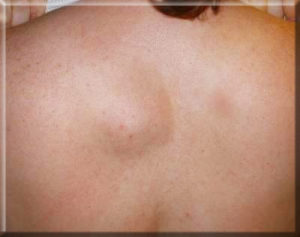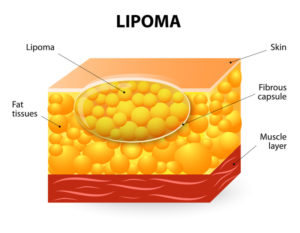What are natural solutions for a Lipoma?
 Ever feel a lump under the skin and worried if it was cancer or a tumor? Well that is exactly what Paul Welling had feared. Having undergone years of perfectly normal annual check ups, Paul was told he had a small lump growing on his back. Alarmed he underwent some checks and was relieved to hear that there were no signs of cancer and this it was just a lipoma.
Ever feel a lump under the skin and worried if it was cancer or a tumor? Well that is exactly what Paul Welling had feared. Having undergone years of perfectly normal annual check ups, Paul was told he had a small lump growing on his back. Alarmed he underwent some checks and was relieved to hear that there were no signs of cancer and this it was just a lipoma.
So what was this lump? It turned out to be a lipoma, a fatty tumor. That sounds ominous when the term tumor is used by a doctor. The truth is there are three type of tumors, the cancerous types, even worst are the metastatic types; and then there are the benign ones. Fortunately the lipoma is the latter, a benign growth. So what is a lipoma?
A lipoma is a growth of fat cells in a thin, fibrous capsule usually found just below the skin. Lipomas aren’t cancer and they don’t turn into cancer. They are found most often on the torso, neck, upper thighs, upper arms, and armpits, but they can occur almost anywhere in the body. One or more lipomas may be present at the same time. (source: WebMD.com)
Lipomas are the most common noncancerous soft tissue growth. and can be felt underneath the skin. They are actually movable and have a soft, rubbery consistency. They can remain the same size or grow slowly over the years. They usually don’t cause pain, but the most bothersome symptom is that the location or size can make them noticeable to others, causing discomfort or self-esteem issues in those who have them.
 Being overweight has no connection to their formation. Some studies suggest stress may be the trigger that brings these on. Stress can prey on previously existing weaknesses in the body, and for some people this is how it manifests itself. So the first thing to do is reduce the stress in your life as a good place to start.
Being overweight has no connection to their formation. Some studies suggest stress may be the trigger that brings these on. Stress can prey on previously existing weaknesses in the body, and for some people this is how it manifests itself. So the first thing to do is reduce the stress in your life as a good place to start.
This author experienced a lipoma in his mid twenties and a chiropractic nutritionist recommended the following supplements, which worked well after taking them for 2-3 months:
- Alpha lipoic acid (Antioxidant that attacks free radicals)
- Lecithin (are amphiphilic – they attract both water and fatty substances (and so are both hydrophilic and lipophilic)
- Vitamin B6, pyridoxine (necessary for key metabolic processes)
There are a variety of natural remedies espoused you can try. They typically involve liver cleansing or herbal teas, all of which provide the body with an increase in anti-oxidants.
If these lumps don’t reduce in size it is recommended to have a professional healthcare practitioner to look at it.
Yours in Natural Health,
docMIKE

No Comments